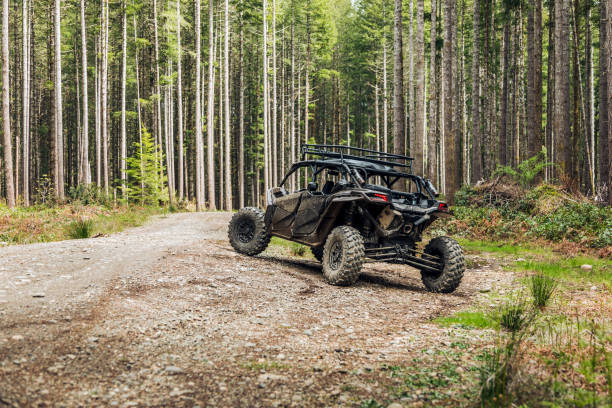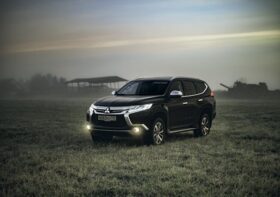Are Modern UTVs Actually Comfortable Enough for All-Day Use?

There’s been a noticeable shift in how utility vehicles are built and marketed over the past few years. What used to be essentially glorified golf carts with bigger engines have evolved into something that looks more like a cross between a small tractor and a luxury car interior. But here’s the question that matters: can you actually spend a full working day in one without wanting to climb out and stretch every hour?
The answer is more complicated than a simple yes or no, and it depends heavily on which UTV you’re talking about.
The Comfort Revolution Nobody Saw Coming
Ten years ago, if someone told you that UTVs would come with heated seats, touchscreens, and proper climate control, most people would’ve laughed. These were work vehicles. They were meant to be tough, not comfortable. The thinking was that if you needed comfort, you’d buy a truck.
But something changed. Manufacturers started realising that people were spending serious hours in these machines. Farmers, groundskeepers, property managers, construction workers – they weren’t just hopping in for a quick trip across a field. They were logging six, eight, sometimes ten-hour days. And uncomfortable operators are less productive operators. It’s that simple.
The other factor was competition. Once one manufacturer started adding creature comforts, everyone else had to follow or risk losing sales. Now we’re at a point where some models genuinely rival entry-level cars for interior refinement, which seemed impossible not that long ago.
What Actually Makes a UTV Comfortable?
The basics haven’t changed much. You still need decent suspension that can handle rough terrain without rattling your teeth loose. You need seats that provide proper support, not just padding. And you need enough space that you’re not cramped or constantly fighting with the steering wheel position.
Where things have improved dramatically is in the details. Modern suspension systems use better damping and longer travel, which means they absorb bumps rather than just transferring them straight through to your spine. Seats have gone from basic vinyl benches to properly contoured designs with lumbar support and, in some cases, adjustable bolsters.
Then there’s the whole cab situation. Open UTVs are fine for short trips in good weather, but they’re miserable when it’s cold, wet, or dusty. Full cabs with proper doors, windows, and weather sealing make an enormous difference to all-day comfort. When you’re looking at options in the current market, the best value UTV choices often include full cab configurations that would’ve been considered premium just a few years ago, though it’s worth comparing what different manufacturers include as standard versus optional extras.
The Climate Control Question
This is where things get interesting. Basic heating has become fairly common, even on mid-range models. But proper climate control – the kind where you can actually regulate temperature precisely rather than just blasting hot or cold air – that’s still mostly found on higher-end machines.
For anyone working in variable conditions, this matters more than it might seem. Starting work on a cold morning means you need heat. By midday in summer, you might want cooling. Without proper regulation, you end up constantly adjusting vents and fan speeds, which gets old fast.
The problem is that effective air conditioning systems add weight, complexity, and cost. They also drain power, which can affect performance and fuel efficiency. Some manufacturers have found clever solutions using more efficient compressors or better insulation to minimize these issues, but there’s always a trade-off.
Noise Levels Make a Bigger Difference Than Expected
Something that doesn’t get talked about enough is how much noise affects fatigue. Spend eight hours in a loud environment and you’ll end up exhausted even if you weren’t doing physically demanding work. Your brain uses energy trying to filter out constant noise, and it adds up over time.
Older UTVs were loud. Really loud. Between engine noise, transmission whine, and wind buffeting, you’d often need hearing protection for extended use. Modern enclosed cabs have changed this significantly. Better sound insulation, refined powertrains, and aerodynamic improvements have brought noise levels down to where you can actually have a conversation at normal volume while driving.
This might seem like a minor luxury, but it has real implications for safety and productivity. Being able to hear your surroundings matters when you’re working around other people or equipment. And arriving at a job site without your ears ringing means you can actually focus on the work rather than recovering from the journey.
Seating Position and Ergonomics
Here’s where some UTVs still fall short. The driving position in many models is clearly designed for someone of average height and build. If you’re taller, shorter, or just proportioned differently, you might find yourself fighting with controls that don’t quite fit your natural reach.
The best designs offer adjustable steering columns and seats that move fore and aft with enough range to accommodate different drivers. Some even have tilt-adjustable steering wheels now, which was unheard of in utility vehicles until recently.
Pedal placement matters too. Awkwardly positioned pedals lead to leg fatigue and can make precision control harder than it needs to be. This is especially noticeable if you’re doing work that requires lots of starting and stopping or precise maneuvering in tight spaces.
Technology Integration and Distraction
Touchscreens, GPS, backup cameras, Bluetooth connectivity – modern UTVs are starting to look like cars inside. This can be genuinely useful. Having navigation when you’re working on a large property or job site saves time. Being able to take phone calls through the vehicle’s audio system means you don’t miss important communication.
But there’s a balance to strike. Overly complicated interfaces can be more distracting than helpful, especially when you’re trying to focus on tricky terrain or precise work. The best systems are intuitive enough that you can operate them with gloves on and without taking your eyes off the path ahead for more than a second or two.
Can They Replace a Work Truck?
This depends entirely on what you need the vehicle to do. For site-to-site transportation, obviously not. UTVs aren’t designed for highway use, and trying to use them that way is both illegal and dangerous in most places.
But for on-site work, particularly on rough terrain or in confined spaces where a full-size truck can’t easily maneuver? That’s where modern UTVs genuinely shine. They can carry substantial loads, tow impressive weights, and get you places a truck simply can’t go. The comfort improvements mean operators are more willing to use them for extended periods rather than defaulting back to a truck just for the better ride quality.
The running costs are lower too. Fuel consumption is a fraction of what a truck uses, and maintenance tends to be simpler and cheaper. For operations where most work happens on a single site or property, the cost savings can be substantial over time.
The Bottom Line on All-Day Comfort
Modern UTVs have come remarkably far in terms of comfort and refinement. The best models can absolutely be used for full working days without causing undue fatigue or discomfort. But “modern UTVs” is a broad category, and there’s still a massive range in quality and features.
Budget models might have improved compared to their predecessors, but they’re still pretty basic. Expect minimal weather protection, simple suspension, and basic seating. They’ll get the job done, but all-day use will be tiring.
Mid-range options typically offer the best value for comfort. This is where you start seeing enclosed cabs, better suspension tuning, and more supportive seats. It’s usually enough for most people spending regular full days in the vehicle.
Premium models go further with features that would’ve seemed absurd in a utility vehicle a decade ago. Heated and ventilated seats, sophisticated climate control, premium audio systems, and suspension that rivals luxury SUVs. Whether these extras are worth the significant price premium depends on how much time you’ll actually spend using the vehicle and how much you value comfort.
The real test isn’t whether a UTV is comfortable for an hour or two. Anyone can tough out a short trip in basic conditions. The question is whether you’d genuinely want to spend eight or ten hours working from one, day after day. For an increasing number of modern UTVs, the answer is actually yes. That’s a bigger shift than it might seem, and it’s changing how a lot of people approach equipment purchases for property management, agriculture, and commercial work.



